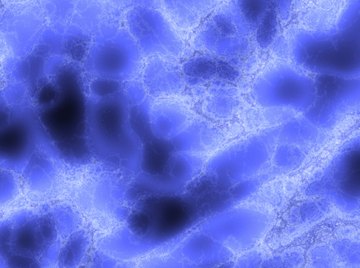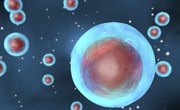
Single-celled organisms are the oldest form of life found on Earth and are found in virtually every habitat. According to Dr. Anthony Carpi at the University of Colorado, the cell is a basic unit of life. Rhode Island College points out that of the six recognized kingdoms into which ordinary life is divided, three are comprised primarily of single-celled organisms. They are also commonly referred to as unicellular organisms. They are a vast, diverse group of organisms, play all kinds of different roles and have found ways to thrive in a wide variety of environments and habitats. In that sense, it can be difficult to find traits that they all share. Still, Project Oceanography at the University of San Francisco indicates that single-celled organisms have a number of common characteristics, including the presence of flagellum, a plasma membrane and organelles. Single-celled organisms are all around you, every day, whether you can see them or not. Examples of unicellular organisms you might recognize include fungi like yeasts and bacteria like E. coli.
Archaebacteria, Eubacteria, Protists
Single-celled organisms are exceptionally diverse, to the point that they cannot be completely boxed into a single taxonomic category. Archaebacteria are commonly called extremophiles as they, unlike most life on Earth, thrive in extreme temperature environments, such as those found on the ocean floor near geothermal vents. Eubacteria are the single-celled organisms that humans are most used to dealing with because they are found in the oxygen-rich, temperate environment we ourselves require to survive. Protists' internal cellular structure is more complex than bacteria. Regardless of these differences, all single-celled organisms exhibit similar characteristics.
Internal Structure
The inside of a single-celled organism is filled with a fluid that is chemically distinct from the environment on the outside of the cell that allows biological processes to take place in a state of disequilibrium with the world outside the cell. In addition, all single-celled organism's interiors contain some degree of structural complexity with different parts of the interior dedicated to performing specialized functions, such as nutrient absorption and protein synthesis.
Cell Walls
To maintain the state of disequilibrium with the outside environment that characterizes any organism's existence, a barrier must be present in its biology that separates internal cell components from the outer world, known as the cell wall. It is a permeable membrane that regulates the movement of nutrients and cellular waste in and out of the cell. It is officially designated a plasma membrane because of the varying chemistry present in a given organism's cell wall.
External Interaction
Many single-celled organisms have a structure that facilitates mobility within the cell's environment. These often take the form of flagella, thin structures that emanate from the cell wall and push into the outer environment. These flagella are the thin, wavy strands of material that microscopic images reveal on the outsides of many cells. In many single-celled organisms, they can move and are termed dinoflagella. Dinoflagella allow the cell to move through its environment, which facilitates the ability of a single-celled organism like a bacteria to move between host bodies and infect new hosts.
References
About the Author
Damien Thryn holds a bachelor's degree in political science from the University of California at Berkeley. Specializing in writing on video games, he has played PC games for more than 20 years and has written about many classics. He is also an avid console gamer.
Photo Credits
Jupiterimages/Photos.com/Getty Images
